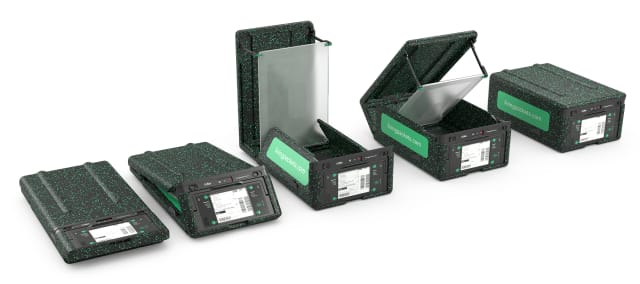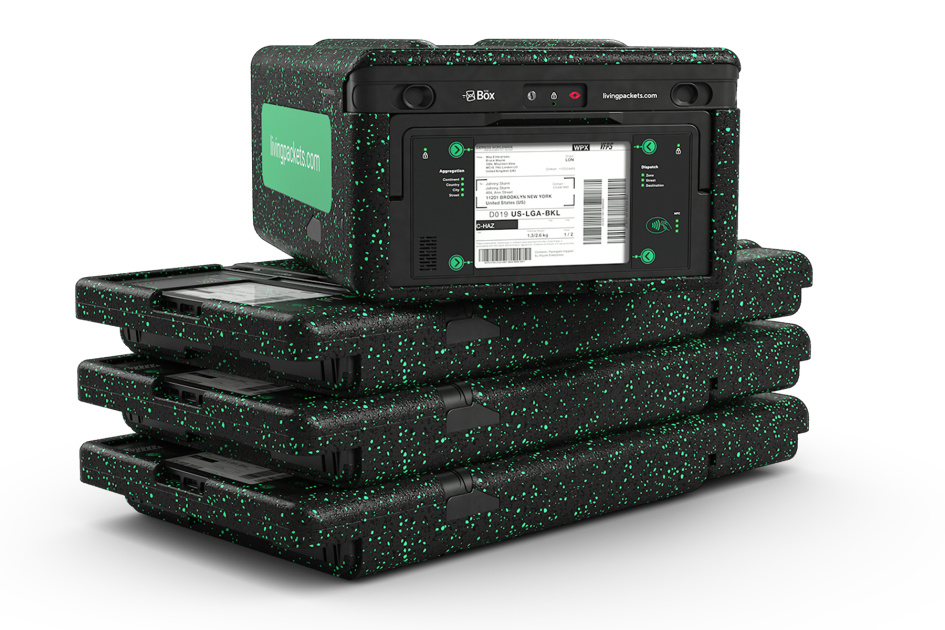There are many advantages to using the box. The second-generation model has an integrated camera, for instance, that allows both the retailer and customers to check whether the order has been damaged. It’s also equipped with a variety of sensors that measure the temperature and pressure inside the case, as well as the pressure, shocks and motion that the goods inside are being subjected to. If you’re ordering something delicate, or that can be damaged through excessive heat or knocks, this could prove invaluable. In theory, a delivery driver could be notified mid-route that the package isn’t secure and should be moved to another place inside their vehicle.
In addition, the second-gen box comes with a speaker and microphone. That means the receiver and delivery driver can communicate with one another without being face to face. LivingPackers increased the size of the E Ink display and added an electrical locking system that stops strangers from opening it. (The recipient uses a companion app to safely unlock it.) Like a traditional cardboard box, it can also be folded down to save space in both warehouses and recipients’ homes. In its unfolded form, the box measures 495x360x180mm, with an internal capacity of 32 liters. Once it’s broken down, the height is reduced from 180 to 10mm.

LivingPackets
Clearly, a cardboard box is cheaper to produce. LivingPackets believes that its replacement can be cost effective, though. For one, the box can last up to 1,000 trips before it needs to be repaired or recycled. Companies should spend less money on damaged orders, too — a costly process which involves sending out a replacement item and financing a follow-up delivery. LivingPackets plans to make money by charging retailers a small service fee for each box delivery. “We offer flexible packages to e-commerce companies,” the official LivingPackets website explains. “The basic package doesn’t cost e-commerce companies more than what they would pay for traditional cardboard boxes.”
A big problem, though, is the retrieval of these boxes. Nobody wants to leave their home just to return a reusable box, for instance. On its website, LivingPackets explains that its ultimate goal is to create a “circular economy.” You could use the box for a future return, for instance. Or, through the LivingPackets app, use the packaging for any regular delivery — a donation to a charity, perhaps, or sending a birthday present to a loved one. Alternatively, users will get some kind of “reward” if they make their box “available to everybody.” They’ll also be rewarded if they return the packaging to an applicable store or give it to a nearby merchant that needs more boxes for their own deliveries. Finally, logistics partners will earn cash if they agree to pick up the box from your home.
LivingPackets has a long way to go. It’s tested an early version of the box with other companies including Cdiscount and Chronopost. The pilot with Boulanger, though, could be an important stepping stone for the startup. One that shows its idea and business model are worth taking seriously. Society has always had a cardboard problem, but the ongoing coronavirus pandemic — which has forced many to shift their shopping away from bricks-and-mortar stores — has brought it into sharper focus. If enough retailers jump on board, LivingPackets could help society move away from boxes, packing tape and sticky shipping labels that are often thrown out after a single use.
This article is auto-generated by Algorithm Source: www.engadget.com


